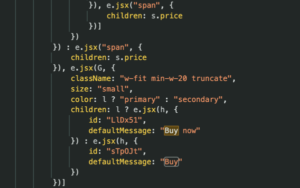Ex-OpenAI Executive Claims Tariffs Offer Opportunity for AI to Thrive

AI and Tariffs: A Unique Moment for Innovation
As the global economy navigates significant challenges, discussions around tariffs and their impact on various sectors, including artificial intelligence (AI), are becoming increasingly relevant. A former executive from OpenAI recently highlighted how current tariff situations could create a unique opportunity for AI technologies to excel.
Understanding Tariffs
What Are Tariffs?
Tariffs are taxes imposed by governments on the import and export of goods. These taxes can affect the prices consumers pay and can influence international trade dynamics. By increasing the cost of imported goods, tariffs aim to encourage consumers to buy domestic products.
Why Are Tariffs Important?
- Protect Local Industries: Tariffs protect domestic businesses from foreign competition by making imported goods more expensive.
- Revenue Generation: They provide significant revenue for governments, which can be directed towards public services.
- Trade Balances: Tariffs can help improve a nation’s trade balance by discouraging imports and promoting exports.
The Intersection of Tariffs and AI
With the rise of AI technology, the discussions surrounding tariffs have garnered attention. This intersection could lead to fundamental changes in various industries.
Opportunities for AI
Cost Reduction through Automation
As tariffs increase the costs of imports, businesses look for ways to reduce operational costs. AI and automation technologies can streamline processes, resulting in significant savings.Enhanced Decision Making
AI can analyze vast amounts of data to help businesses make informed decisions about pricing, supply chain management, and market strategies, particularly in the face of fluctuating tariffs.- Innovation Leadership
Countries focusing on AI advancements may become leaders in technology, attracting investments and talent. This shift could level the playing field amidst rising tariffs on foreign goods.
Challenges Presented by Tariffs
While there are opportunities, tariffs also present challenges that can affect the AI sector and its development.
Key Challenges
- Increased Costs for AI Hardware: Tariffs on computer components, chips, and other hardware can drive up costs for businesses developing AI solutions.
- Market Uncertainty: Changes in tariffs can lead to uncertainty, making it difficult for companies to plan long-term investments in AI technologies.
- Supply Chain Disruptions: Tariffs can lead to delays in product sourcing, complicating supply chains for AI technologies that depend on global sourcing.
Strategies for Businesses
To capitalize on the opportunities presented by the current tariff landscape, businesses can adopt specific strategies:
Invest in Local Talent
Hiring local AI experts and investing in training programs can enhance innovation while circumventing international tariff issues.Diversify Supply Chains
By diversifying suppliers and incorporating local resources, businesses can mitigate the risks associated with tariffs and ensure a more stable supply chain.- Leverage AI for Cost Management
Employ AI tools for predictive analytics to foresee market trends and adjust strategies proactively in response to tariff changes.
The Future of AI in a Tariff-Driven Economy
The current global landscape presents both challenges and unique opportunities for the AI sector. Tariffs may push businesses to innovate and improve efficiency, allowing AI to take center stage. This could enable economies to adapt and thrive within a changing market, ultimately leading to advancements in technology that benefit consumers and businesses alike.
By understanding the implications of tariffs on the AI industry, stakeholders can better navigate the complexities of the economy and seize the potential that lies ahead.






